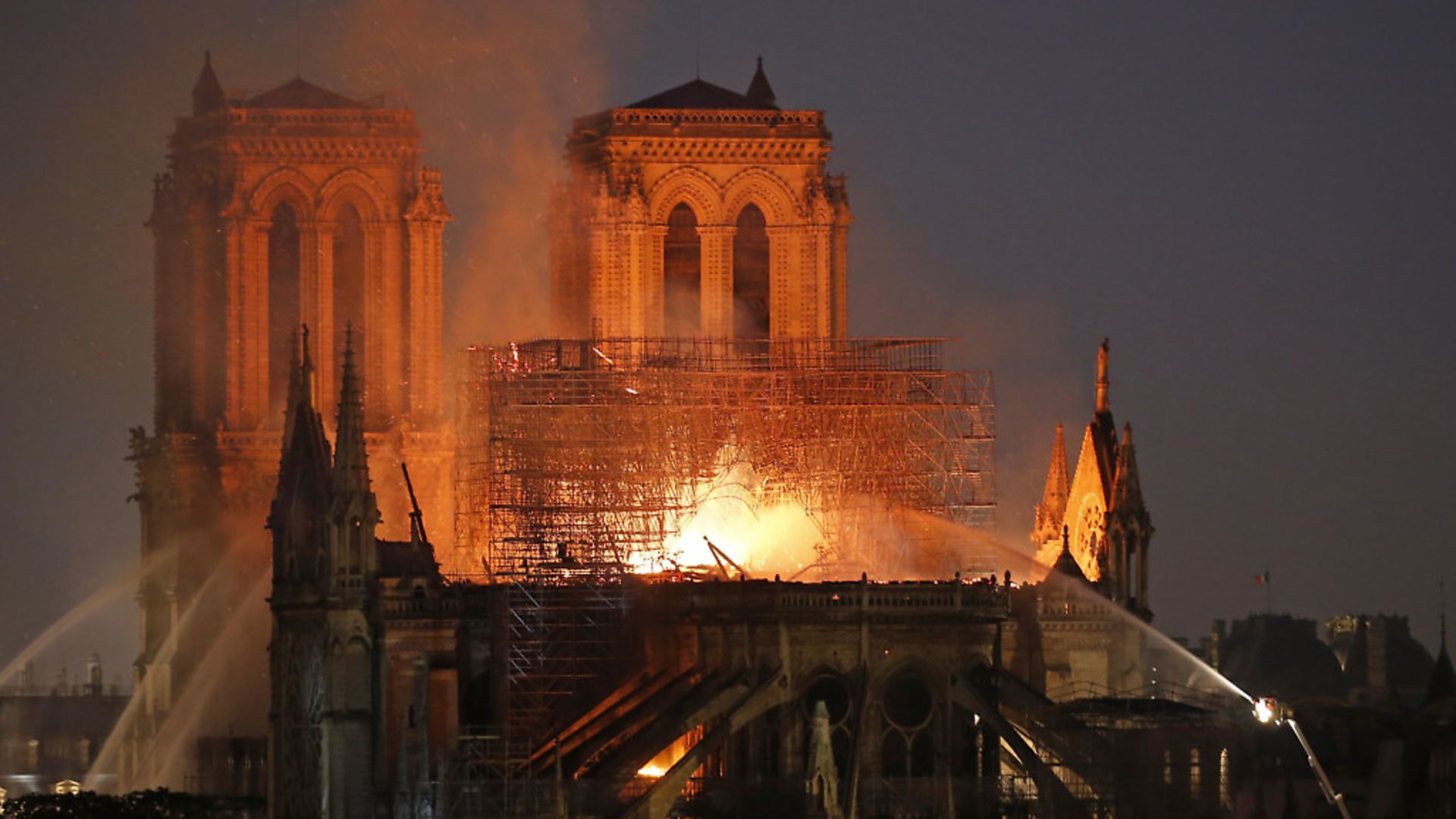
BONNIE GREER says it is Notre Dame de Paris’ historic obligation to take the benefice offered to it and to share it with the poor, the sick, the homeless, the elderly and children.
The question as to why billionaires would prefer giving money to an historic monument rather than to the poor is a question, on the surface, that seems worthy of a three-year-old.
After the age of three, you discover that if the rich helped the poor there would be no poor. ‘Money never sleeps’, as the saying goes, especially when it can be demonstrated to be in the service of God and the patrimony.
Money, at the level of the great fortunes of France, is big-ticket and very discreet. It is discreet in the sense that the great French families and firms usually only put their name to what will be seen as glory and what will last.
The luxury goods conglomerate LVMH – behind brands like Louis Vuitton, Moët and many more – and its CEO Bernard Arnault have pledged 200 million euros towards the costs of restoring the fire-damaged Notre Dame cathedral. The donation has been matched by the Bettencourt Meyers family, which controls L’Oreal, while the Pinault family, which operates luxury conglomerate Kering (PPRUF), has pledged 100 million euros.
But since these offers we have seen what could be called the ‘pushback of Notre Dame’, from French trade unions and on social media. For these critics, Notre Dame has become a symbol of inequality, of the elite. The centrality of the cathedral in reality and imagination cannot be doubted. It lies there for all of us, even if you have never and will never see it. It is in novels and travelogues, poems and movies, songs and paintings.
There is a phrase in French that I heard once and cannot recall that describes the melancholy of Japanese tourists who come to Paris. They have a dream when they arrive, but the reality spread before them is that of a city with all of the problems that every modern city has. But the dream still holds sway, and becomes a kind of organising principle. Paris, a world city, is part of who we are.
And the cathedral, too. So the fire becomes something visceral and personal and emotional. The rich gave. Musicians organised concerts and played before the burned building. Emmanuel Macron looked very young and very vulnerable standing outside a part of the patrimony, harmed on his watch. He talked to France and the world because he was obliged to. We all looked young and vulnerable in the face of this.
Six days after the fire, more than 200 people were killed in Sri Lanka, many in churches, where they were gathered for Easter Sunday. There was an appalled shrug. What could we do? And we heard nothing from the billionaires. It was ‘over there’ after all.
‘Over there’ lies within the story of Quasimodo – the ‘half-made’. Victor Hugo, the author of the novel that put the cathedral on the map for all time, Notre-Dame de Paris (The Hunchback Of Notre Dame in its English publication), created a deformed man with the perfect soul who had found sanctuary in the medieval church. As well as doomed love. Hugo wanted to make the Parisians of the 1820s and 1830s care about the dilapidated old building.
And since a tale of unrequited love seldom fails to succeed, it came down to our time and became our own. We can enter the cathedral thinking of him and the gargoyles outside on the top, guarding the building. Notre Dame is everything: church and museum; solemn place and pick-up site. It is a traditional place, truly French. And more than that.
The atrocities on Easter Sunday in Sri Lanka lost their distance from us as the American and British newscasters read out the names of the dead who were not Sri Lankan. This helped to keep us engaged; empathetic; connected to the other people, too. Sri Lanka is still waiting to see what will happen next, while we keep it as far away as we can. Yet Notre Dame is near, even for those who have never seen it.
I know someone who lives near it and she said that the smell of the burning in the air had a strange and sweet odour. The atrocities in Sri Lanka featured body parts clinging to walls. I watched one journalist as he reported that the air had the stench of a charnel house and you could tell that he was trying to control his gag reflex as he breathed in what had happened. Yet there have been no announcements yet that M Arnault and M Pinault will be donating to the costs of the rebuild of those destroyed churches.
It is not great inequality that has created the rift now between the rich and the poor. It is the knowledge of it. Income equality is certainly much less now than when the cathedral was first built in the 12th century. But poverty was also considered a station in life, a reality that could never be escaped. The church became a kind of refuge, a soother and explainer in the voyage through this life. It was never a neutral space, but it became a refuge of the soul, the brain, the heart and the imagination for those who could and who wanted to enter. The question always was: what about those left outside?
It is Notre Dame de Paris’ historic obligation to take the benefice offered to it and to share it with the poor, the sick, the homeless, the elderly and children – all of the communities that it was expected to serve when construction began centuries ago. There is an opportunity with this great fire that, if taken, can point a way forward.
If the rebuild can become a symbol of solidarity, of that universal world that the Paris Commune envisaged and tried to bring forward in its three weeks of existence in 1871, then there could be a way forward for humankind, too.
While the Commune was anti-religious and executed the then Archbishop of Paris, it understood how to move forward to a just and equal society. The cathedral fire gives us an opportunity to make a universal humankind, if we want. Believer and non-believer.
The people toiling over the centuries to build Our Lady Of Paris had a sense of something bigger than themselves. We are creatures who dream, who can see a future. Maybe this ability is what helped us survive, this capacity to co-operate, to see ourselves to be more than ourselves. And to know somewhere in ourselves that the bridges and walls, the tunnels and roads could never destroy the bond of humanity. And the yearning to recreate humanity in every step we take.
Once I climbed the stone steps to the roof of the cathedral, to look at the Paris that my favourites, the gargoyles, saw. It is easy to be corny and sentimental about that town, it invites you to be that way. But for one moment, peering out from behind the stones, I recalled a tiny scrawl in the stone somewhere. I was told it was the signature of a stonemason, someone who wanted to be remembered down the ages. A repository of human memory is what the cathedral is. Notre Dame de Paris helps us remember who we are: human beings attempting to climb upwards.










